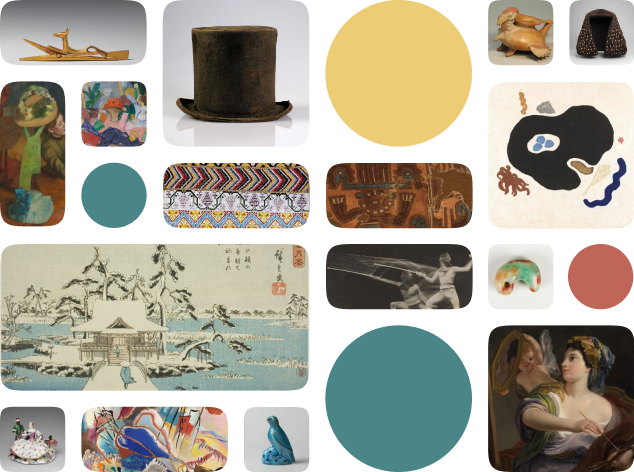A Votive Picture to Be Donated to the Kannon of Asakusa (Asakusa Kannon hō kakegaku no zu), by Takigawa of the Ōgiya, Kamuro Menami and Onami, with Tomikawa, Kumegawa, Tamagawa, Tsugawa, Utagawa, and Kiyokawa
Creator Name
Cultural Context
Date
Source
About the Work
Oiran, high-ranking Japanese courtesans, were often renowned artists as well as stylish beauties. In the 1790s and early 1800s Takigawa, of the Ōgiwa brothel in Edo (now Tokyo), was both artist and beauty. Several portraits celebrating Takigawa exist today. This woodblock print of Takigawa directing a group of other courtesans and young assistants showcases the oiran as an artist and temple patron. She and her assistants are painting an image to be offered to the temple of Kannon, a Buddhist bodhisattva, at Asakusa in what is now Tokyo. Votive offerings like this painting were a way for courtesans, like other members of society, to gain favor with the gods or bodhisattvas and to advertise their own largesse. Learn more about courtesans and spirituality in Edo art.
Metropolitan Museum of Art Object Description
Woodblock print
Work details
"--" = no data available
Title
Creator
Worktype
Cultural Context
Material
Dimensions
Technique
--
Language
Date
Provenance
Style Period
Rights
Inscription
--
Location
Source
Subjects
Topic
--
Curationist Contributors
Related Content
All Works in Curationist’s archives can be reproduced and used freely. How to attribute this Work:
Tsukimaro, A Votive Picture to Be Donated to the Kannon of Asakusa (Asakusa Kannon hō kakegaku no zu), by Takigawa of the Ōgiya, Kamuro Menami and Onami, with Tomikawa, Kumegawa, Tamagawa, Tsugawa, Utagawa, and Kiyokawa, circa 1800. Metropolitan Museum of Art. The famous courtesan and artist Takigawa, of the Ōgiya brothel in Edo (now Tokyo), directs a group of courtesans and assistants as she paints a votive offering for the Kannon Bodhisattva at the Asakusa temple. Public Domain.
Help us improve this content!
Let our archivists know if you have something to add.
Save this work.
Start an account to add this work to your personal curated collection.
